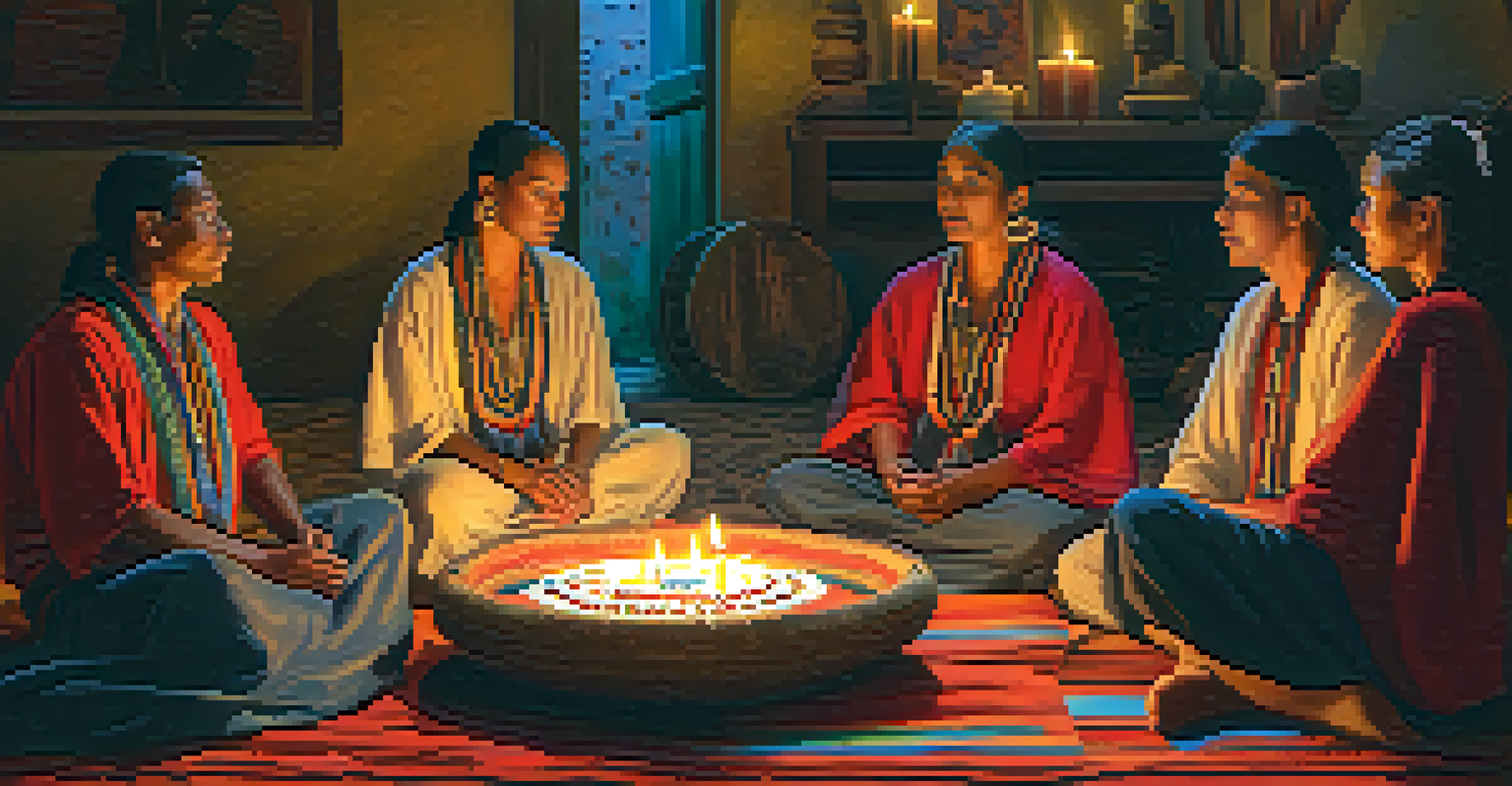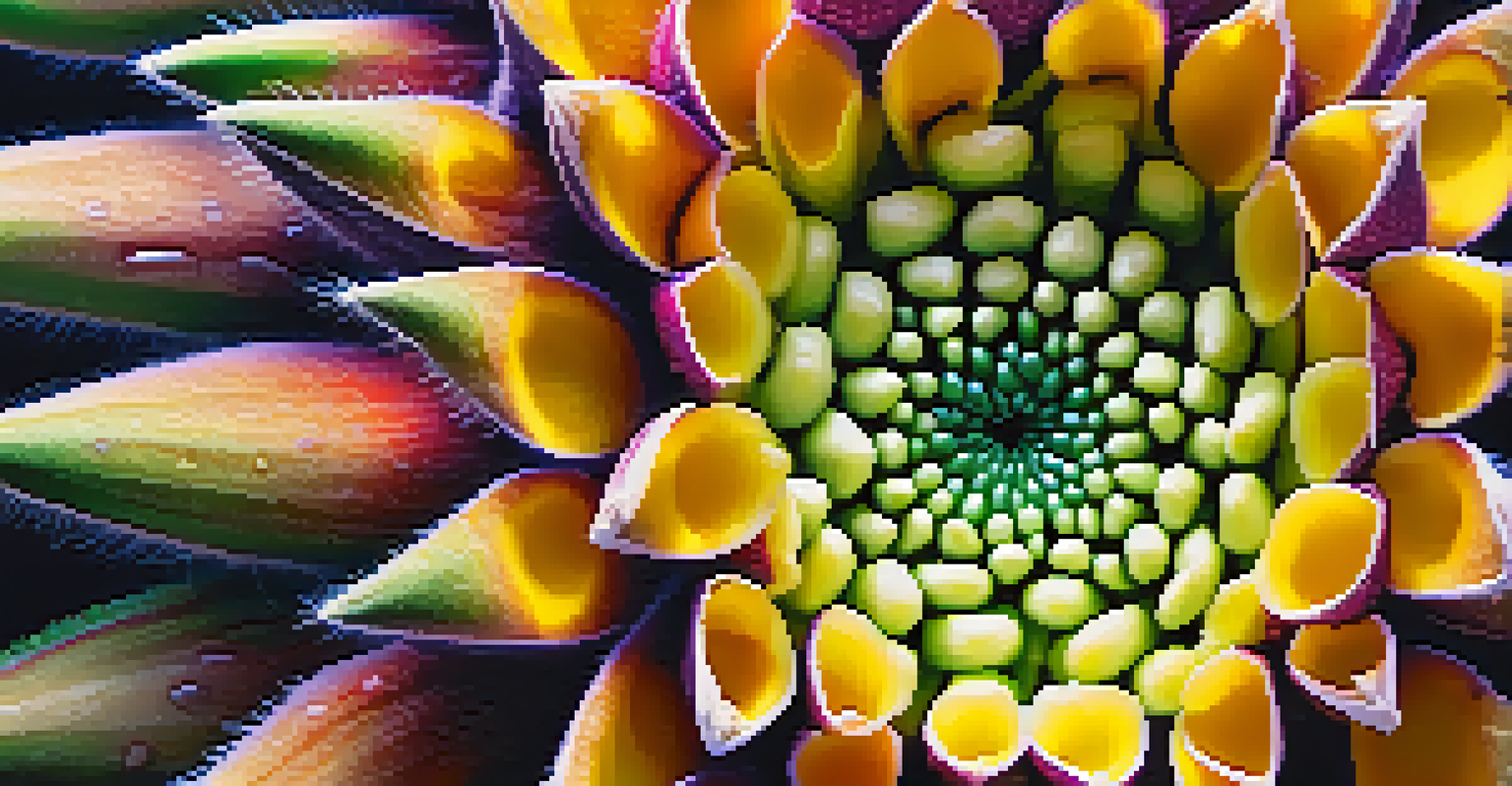Peyote's Historical Use in Healing and Therapy Practices

Understanding Peyote: A Brief Overview
Peyote is a small cactus known for its psychoactive properties, primarily due to a compound called mescaline. Traditionally used by Indigenous peoples in North America, this plant has been integral to various spiritual and healing practices. Its vibrant history intertwines with cultural rituals, highlighting its significance beyond mere recreation.
The use of peyote has been a powerful tool for healing and transformation among Indigenous peoples for centuries.
Unlike many modern substances, peyote is not just about the experience; it's about the journey and the transformation it can facilitate. For centuries, shamans and healers have turned to peyote to connect with the spiritual realm and seek guidance. This connection is often seen as a pathway to emotional and mental healing.
Today, as interest in alternative therapies rises, peyote is being revisited, not just as a mystical substance but as a potential therapeutic agent. Understanding its historical context is crucial for grasping its modern applications and the respectful way it should be approached.
The Role of Peyote in Indigenous Healing Practices
For many Indigenous cultures, peyote is more than a plant; it’s a sacred medicine. Used in ceremonies, it helps facilitate healing on physical, emotional, and spiritual levels. The rituals surrounding peyote use often involve singing, drumming, and communal sharing, creating a supportive environment for healing.

These practices are steeped in tradition, passed down through generations, and are rooted in a deep understanding of the human experience. Participants often report profound insights and emotional release during these ceremonies, highlighting the plant's role in addressing issues like trauma and grief.
Peyote's Cultural Significance
Peyote holds deep spiritual and healing importance for Indigenous peoples, serving as a sacred medicine used in communal rituals.
Moreover, the communal aspect of peyote rituals fosters connection and support among participants, reinforcing the idea that healing is often a collective journey. This contrasts sharply with the more individualized approaches seen in many modern therapeutic practices.
Psychoactive Effects: The Journey Within
When consumed, peyote induces a range of psychoactive effects that can lead to heightened perception and introspection. Users often describe experiencing vivid visual and auditory hallucinations, which can provide new perspectives on personal challenges. This experience is sometimes referred to as a 'journey,' where individuals confront their inner selves.
Psychedelics can help us confront our fears and traumas, leading to profound personal insight and growth.
The altered state of consciousness can facilitate deep emotional processing, allowing individuals to confront and heal past traumas. Many find that the insights gained during these sessions can be transformative, leading to lasting changes in their lives. This aspect of peyote is key to its historical use in healing practices.
However, it’s essential to approach this journey with respect and intention, as the experiences can vary widely. Preparation and guidance from experienced practitioners can make a significant difference in the therapeutic outcomes.
Research and Modern Therapeutic Applications
In recent years, there has been a growing interest in the therapeutic potential of peyote, especially in treating mental health issues like PTSD and depression. Research is beginning to uncover how mescaline, the active component of peyote, can promote emotional healing and personal insight. This research is critical, especially as the mental health crisis continues to escalate globally.
Clinical studies have shown that, when used in a controlled environment with proper guidance, peyote can lead to significant improvements in mental well-being. These findings are encouraging, paving the way for more rigorous scientific exploration into its therapeutic uses.
Therapeutic Potential of Peyote
Recent research suggests that peyote, particularly its active compound mescaline, may offer significant benefits for mental health issues like PTSD and depression.
However, it's important to note that while the results are promising, more research is needed to establish standardized practices and safety protocols. Understanding the historical context of peyote use provides valuable insights for its modern applications.
Ethical Considerations in Peyote Use
As interest in peyote grows, ethical considerations must come to the forefront. The cultural significance of peyote for Indigenous peoples cannot be overstated, and its appropriation by those outside these communities raises concerns. Respecting the traditions and practices associated with peyote use is essential to honor its legacy.
Many Indigenous groups advocate for the preservation of their rituals and the protection of their sacred plants from commercial exploitation. This highlights the importance of engaging with these communities and understanding their perspectives on peyote use.
Engaging respectfully with Indigenous knowledge and practices can foster a more ethical approach to peyote use, ensuring that its healing properties are honored and preserved for future generations.
Personal Stories: Healing Through Peyote
Many individuals who have participated in peyote ceremonies share transformative personal stories. These narratives often illustrate the powerful emotional and psychological healing that can occur during these experiences. For instance, some individuals recount how facing their fears during a peyote journey led to profound breakthroughs in their lives.
These personal accounts highlight the potential of peyote as a tool for self-discovery and healing. They serve as reminders that, while science plays a crucial role, the human experience and connection to these practices are equally important.
Ethical Use and Cultural Respect
The growing interest in peyote necessitates ethical considerations to honor and respect the traditions of Indigenous communities associated with its use.
Moreover, sharing these stories fosters a sense of community and encourages others to seek healing through similar paths. They remind us that the journey is as important as the destination.
The Future of Peyote in Healing and Therapy
As society continues to explore alternative healing modalities, the future of peyote in therapeutic settings looks promising. Increasing acceptance of psychedelics in mental health treatment can lead to more research and understanding of peyote’s potential benefits. This could pave the way for more inclusive and effective healing practices.
However, it’s essential to approach this future with caution and respect for the traditions from which peyote originates. Ensuring that Indigenous voices are included in the conversation is vital to prevent exploitation and ensure ethical use.

Ultimately, the future of peyote in healing and therapy may lie in a balanced approach that honors its rich history while exploring its potential in modern therapeutic contexts. This balance could lead to innovative and respectful practices that benefit all.